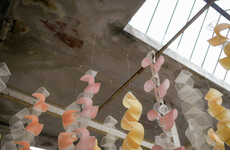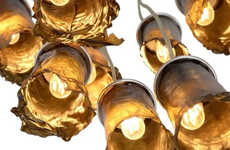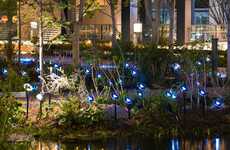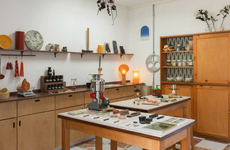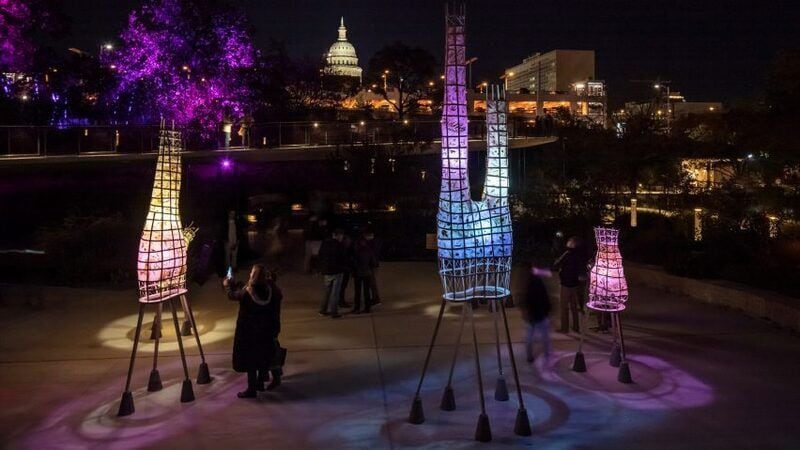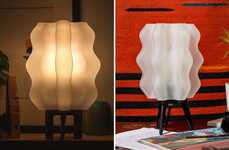
Wevolve Labs Created a Series of Sculptural Lights with Biomaterials
Elena Rahman — May 6, 2022 — Eco
References: wevolvelabs.in & dezeen
Wevolve Labs created a series of luminescent sculptures crafted from biomaterials. The multidisciplinary collective company used bioplastic skins from local plants to structure its group of lantern-like sculptures. The installation is on view in Austin, Texas, and is dubbed the Bionest.
The Bionest project comprised five free-standing sculptures inspired by the shapes of local plants and birds. Each sculpture ranges in size from two to seven meters tall and feature asymmetrically shaped exteriors. The exterior biomaterial skins are created from carrageenan, which is a seaweed extract. They are positioned on wooden stands, giving the sculptures their elongated appearances. According to Wevolve Labs, the material offers a apetroleum-free alternative to traditional plastic, making for an eco-friendly design.
Image Credit: Wevolve Labs
The Bionest project comprised five free-standing sculptures inspired by the shapes of local plants and birds. Each sculpture ranges in size from two to seven meters tall and feature asymmetrically shaped exteriors. The exterior biomaterial skins are created from carrageenan, which is a seaweed extract. They are positioned on wooden stands, giving the sculptures their elongated appearances. According to Wevolve Labs, the material offers a apetroleum-free alternative to traditional plastic, making for an eco-friendly design.
Image Credit: Wevolve Labs
Trend Themes
1. Biomaterial Sculptures - Using biomaterials to sculpt eco-friendly designs is an innovative trend, offering biodegradable alternative while reducing carbon footprint
2. Bioplastic Skins - Incorporating bioplastic skins from local plants into product design presents breakthrough opportunities for reducing waste and pollution in traditional plastic manufacturing
3. Luminescent Art - The use of luminescent materials in art installations has further creative possibilities that can benefit from advances in materials science and sustainability
Industry Implications
1. Art and Design - The use of biomaterials and bioplastic skins in art installations presents a promising eco-friendly avenue for artists and designers
2. Sustainable Manufacturing - Manufacturing industry can explore incorporating biomaterials and bioplastic skins from local plants to reduce carbon footprint while promoting product innovation
3. Materials Science - Materials science industry has an untapped market in eco-friendly materials, including biomaterials and bioplastics, suggesting potential breakthroughs
4.1
Score
Popularity
Activity
Freshness

